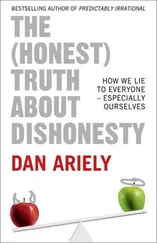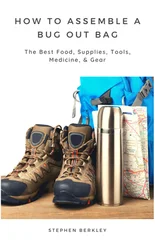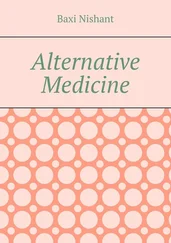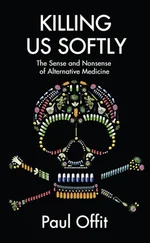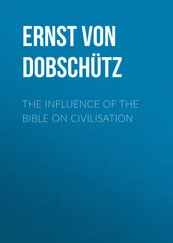What is the evidence?
The evidence for relaxation therapies is mixed, and depends particularly on the condition under consideration. Relaxation treatments are effective for reducing stress and anxiety. Encouraging evidence also exists for treating insomnia, hypertension and menopausal symptoms. Whether relaxation treatments are helpful for controlling pain is still controversial, and they do not seem to be effective for chronic fatigue syndrome, irritable bowel syndrome, dyspepsia and epilepsy.
For patients with schizophrenia or severe depression, relaxation might aggravate their problem. Otherwise there seem to be no serious risks.
Conclusion
Relaxation techniques are helpful for a range of conditions. They are appreciated by many, not least because they put patients in charge of their own health. There are no serious risks if used appropriately.
Shiatsu
A type of forceful massage therapy developed in Japan, consisting of the application of pressure on acupuncture points, usually with the thumbs.
Background
Shiatsu can be seen as the Japanese synthesis of acupuncture and massage. Literally it means finger ( shi ) pressure ( atsu ). It was founded by Tokujiro Namikoshi, who established the Japan Shiatsu College in 1940. At the age of seven, Namikoshi discovered the value of shiatsu when he treated his mother who suffered from rheumatoid arthritis.
The therapist typically uses his thumb to apply strong pressure on acupuncture points. Sometimes the palm of the hand or the elbow are also used. The treatment can be painful for the patient.
A shiatsu practitioner would start by making a diagnosis about the balance of the two life forces, yin and yang, so to some extent shiatsu is similar to traditional Chinese medicine. Depending on the findings, the practitioner would then apply pressure to points along yin or yang meridians. If the patient is diagnosed as having an excess of one, the therapist would tend to stimulate the other. By re-establishing balance, shiatsu practitioners believe they can treat many conditions.
As yin and yang, acupuncture points and meridians are not a reality, but merely the products of an ancient Chinese philosophy, shiatsu is an implausible medical intervention. However, like all massage techniques, it may generate relaxation and a sense of wellbeing.
What is the evidence?
There are virtually no clinical trials of shiatsu, but there is no reason to think that it is any more effective than a conventional massage.
Due to the high forces applied during treatment, injuries can occur. These range from bruises to bone fracture in the elderly with advanced osteoporosis. There are also reports of retinal and cerebral artery embolism associated with shiatsu massage applied to the neck or head.
Conclusion
Shiatsu is based on the biologically implausible theory of yin and yang. There is no evidence that it is effective for any specific conditions. Shiatsu massage therefore seems to be a waste of effort and expense, which offers nothing above conventional massage.
Spiritual Healing
The interaction between a healer and a patient for the purpose of improving health.
Background
Many different forms of spiritual healing exist: faith healing, intercessory prayer, reiki, therapeutic touch, psychic healing, Joheri healing, wart charming, etc. The common denominator is that healing ‘energy’ is channelled via the healer into the body of the patient. This ‘energy’ is supposed to enable the patient’s body to heal itself. The term ‘energy’ needs to be put in inverted commas because it certainly is not energy as understood by scientists, but rather it has a spiritual or religious basis. All attempts to detect or quantify it have so far failed.
Healers view themselves as instruments of a higher power with healing ability bestowed upon them from above. Most state that they have no idea how their treatment works, but are nevertheless convinced that it does. The patient on the receiving end often feels sensations of warmth or tingling as the ‘energy’ apparently enters the body.
Consulting a healer usually involves a short conversation about the nature of the problem. The healer then starts the healing ritual. Initially this can be diagnostic by nature. For instance, the healer’s hands may glide over the patient’s body to identify problem areas. Eventually the healing starts, and ‘energy’ is supposed to flow. Many patients experience this as extremely relaxing, while healers often feel drained after a session.
With other forms of spiritual healing, however, there is no personal contact between healer and patient. Sessions can be conducted at great distances, over the phone or the internet. Some healers offer their services for free, while others charge up to £100 for a half-hour session.
What is the evidence?
The concept of healing ‘energy’ is utterly implausible. Many clinical trials of various healing techniques are available. Some initially generated encouraging results, but about twenty of these studies are now suspected to be fraudulent. More recently, rigorous trials have emerged and shown that spiritual healing is associated with a large placebo effect — but with nothing more.
Conclusion
Spiritual healing is biologically implausible and its effects rely on a placebo response. At best it may offer comfort; at worst it can result in charlatans taking money from patients with serious conditions who require urgent conventional medicine.
Traditional Chinese Medicine
An ancient healing system which employs various treatments to restore the balance of Ch’i, the vital energy that governs health.
Background
According to Traditional Chinese Medicine (TCM), all ill-health is viewed as an energy imbalance or blockage, while optimal health is a state of perfect balance, often symbolized by the yin — yang image. The aim of any therapy must be to restore the balance or to prevent any imbalance in the first place. For this purpose, TCM offers a range of treatments, including herbal mixtures, acupuncture, cupping, massage and diet, which are all discussed in more detail elsewhere in this book. All conditions are said to be treatable with TCM.
A TCM consultation will involve diagnostic techniques, such as tongue and pulse diagnoses. Although these techniques are also part of conventional medicine, TCM practitioners make un reasonably ambitious claims about their diagnostic power. Treatment will be tailored to the individual. One session would typically last 30–60 minutes, and treatment can be long-term, if not for life.
What is the evidence?
The TCM system is complex and not easy to evaluate. Thus its various elements are usually tested separately (see acupuncture in Chapter 2, for instance). Chinese herbal medicines usually contain a multitude of herbs which are individualized according to the specific needs of every patient. This approach has recently been tested in cancer patients and shown to be no better than placebo in alleviating symptoms. In another rigorous study, Chinese herbal medicine was tested in patients with irritable bowel syndrome against a standardized herbal prescription and against a placebo. The results suggested that individualized treatment is better than placebo in controlling symptoms, but not better than a (much simpler) standardized herbal medicine.
Some individual herbs used in TCM (e.g. liquorice, ginger, ginkgo) undoubtedly have pharmacological effects; some have even provided the blueprint for modern drugs. On the other hand, some Chinese herbal medicines are toxic (Aristolchia) and others may interact with prescription drugs. Chinese ‘herbal’ preparations may also contain non-herbal ingredients (e.g. endangered animal species), contaminants (e.g. heavy metals) or adulterants (e.g. steroids).
Читать дальше


